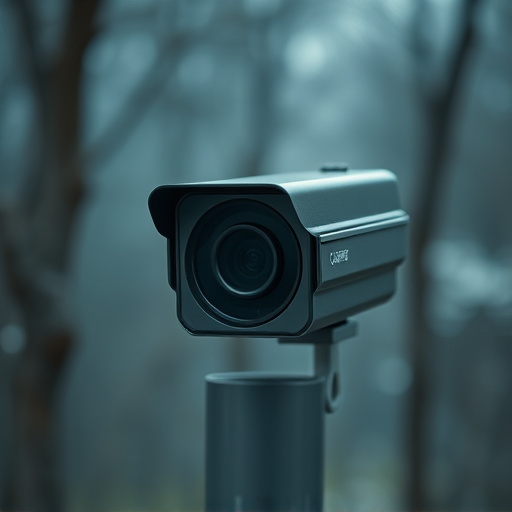Understanding elderly care needs demands a thoughtful approach to surveillance using best hidden cameras, which are vital for safety, monitoring activities, and detecting falls or unusual behavior. Balancing privacy and security is key; discreetly placed cameras capture relevant footage without infringing on individual privacy. Ethical considerations include obtaining informed consent and adhering to legal guidelines varying by region. Thoughtful planning involves evaluating needs, selecting high-quality best hidden cameras with advanced features, strategically placing them, integrating with a robust recording system, and regularly updating software for maximum privacy.
In today’s digital era, ensuring the safety and well-being of elderly individuals in care settings is paramount. The installation of a covert camera network, utilizing best hidden cameras for elderly care, offers a discrete yet powerful solution. This comprehensive guide delves into understanding the unique surveillance needs of elderly care, selecting the right discreet cameras, navigating ethical and legal guidelines, and provides a step-by-step network installation process to uphold privacy standards.
- Understanding Elderly Care Needs and Surveillance
- Selecting Discreet Cameras for Optimal Coverage
- Ethical Considerations and Legal Guidelines
- Network Installation: A Step-by-Step Guide to Privacy
Understanding Elderly Care Needs and Surveillance
Understanding Elderly Care Needs and Surveillance goes hand in hand when considering the installation of a covert camera network. As technology evolves, so do the best hidden cameras for elderly care. These devices play a crucial role in ensuring safety, especially for seniors living alone or with cognitive impairments. By installing discreet surveillance systems, caregivers can monitor activities, detect falls or unusual behavior, and provide timely assistance.
When designing an elderly care surveillance system, it’s essential to prioritize privacy while meeting security needs. Best hidden cameras should be placed strategically, out of sight but capable of capturing relevant footage. This approach respects the privacy of the elderly individuals while allowing caregivers and families to stay informed about their well-being.
Selecting Discreet Cameras for Optimal Coverage
When considering a covert camera network installation, especially for elderly care settings, selecting discreet cameras is paramount to achieving optimal coverage without compromising privacy or disrupting daily routines. Best hidden cameras for elderly care should blend seamlessly into their surroundings, whether it’s wall-mounted, placed in corners, or integrated into everyday objects like picture frames or lamps.
This subtlety ensures that the focus remains on providing a safe and comfortable environment, rather than drawing attention to surveillance equipment. Additionally, these best hidden cameras should offer high-resolution video, reliable connectivity (e.g., Wi-Fi or Ethernet), and easy remote access for caregiving staff, enabling them to monitor activities, ensure safety, and address concerns promptly.
Ethical Considerations and Legal Guidelines
When considering installation of a covert camera network, especially for elderly care settings, ethical considerations and legal guidelines must be paramount. The use of best hidden cameras in such environments should prioritize privacy and respect for residents’ autonomy. It’s crucial to obtain informed consent from individuals or their legal guardians, ensuring they understand the surveillance system’s purpose and scope. Transparency is key; caregivers and staff members should also be made aware of the camera network’s existence to maintain trust and integrity within the care environment.
Legal guidelines vary by jurisdiction, so it’s essential to consult local laws and regulations governing surveillance. Many regions have specific rules regarding where cameras can be placed, who has access to footage, and data retention policies. Adhering to these guidelines not only helps avoid legal repercussions but also reinforces ethical practices. For best hidden cameras for elderly care, selecting devices that offer remote activation, night vision, and discrete design can enhance monitoring capabilities while minimizing intrusiveness.
Network Installation: A Step-by-Step Guide to Privacy
Installing a covert camera network for elderly care is a delicate task that requires careful planning and execution to ensure privacy and security. Start by assessing the needs of the elderly individual or facility, considering factors such as living space layout and specific areas of interest. Next, select best hidden cameras suitable for discreet observation, with features like motion activation, night vision, and high-resolution video quality.
Once chosen, strategically place each camera, leveraging common hiding spots while avoiding obvious locations. Ensure wire management is neat to prevent tripping hazards and maintain aesthetics. Integrate the network with a reliable recording system, allowing for remote access through a secure platform. Regularly test and update software to safeguard against potential security breaches, ensuring maximum privacy protection for everyone involved.
When implementing a covert camera network for elderly care, it’s essential to balance privacy concerns with comprehensive surveillance. By selecting high-quality hidden cameras that offer discreet yet effective coverage, you can ensure safe and comfortable living environments. Adhering to ethical guidelines and legal installation practices is paramount to respecting the autonomy of elders while maintaining necessary oversight. Following best practices, including careful camera placement and robust network security, allows for enhanced care without invasion of privacy, making it a practical solution with the potential to improve quality of life for elderly individuals. Consider the best hidden cameras for elderly care that align with these principles for a modern approach to surveillance.
